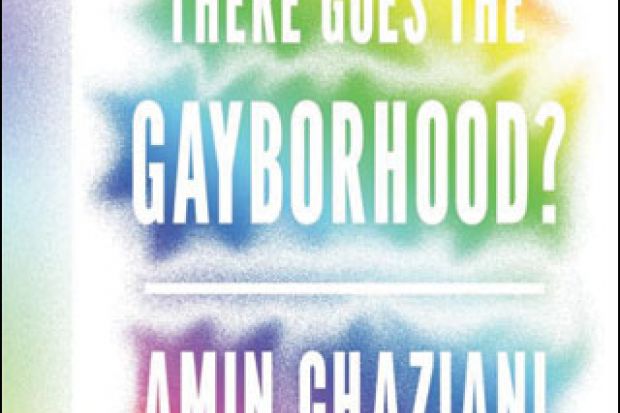I live in Brighton, the supposed “gay capital” of Europe; I moved here in 1985 to be a lesbian, making me part of that great gay migration. As Kath Weston put it in a much-cited 1995 paper, “Get thee to a big city”, and it seems queers are still lighting out for the territory, albeit urban jungles rather than American plains. Queers’ frontier regions are decidedly more metropolitan.
Certain cities are seen as oases of gay-friendliness, famously Brighton, Berlin, Sydney, Manchester, Paris, and perhaps the Ur-city for queers, San Francisco. Amin Ghaziani’s book describes his own careful case study of Chicago, focusing on the two “gaybourhoods” of Boystown and Andersonville. Through the prism of these two spaces, Ghaziani considers how such queer geographies have changed in response to social and cultural trends, and how they manage their inner demographics.
I learned from this rather baggy but informative work that apparently there is a kind of gay panic in the US about the decline of gaybourhoods. Because of “post-gay” neoliberalism and its concomitant gradual assimilation of gays and lesbians into cultural norms, we are told, the shouty “We’re here, We’re Queer, Get Used to It!” is being supplanted by the whispery apologia “I may be gay but I’m ethnically straight”. Maybe Dorothy doesn’t need Oz any more.
However, says Ghaziani, it might be too soon to write an elegy for the brief 50-year appearance in human geography – from the Second World War to the 2000s – of the gay ghetto. Drawing on census data, opinion polls, media reports and more than 100 interviews, he painstakingly tracks the gay footprint across Chicago and, by extension, the US. He argues that in some places, such as the Castro district in San Francisco and in North Halsted Street in Boystown, Chicago, gaybourhoods have become heritage spaces (and the book includes some photos of the hilariously phallic rainbow pylons erected by Chicago’s city council in honour of gay history). But queer migration evolves continuously, moving restlessly to form new spaces delineated by ethnic, age or gender criteria.
This book is very American in its precepts – and it is about America, so fair enough. In line with many cultural geographers, Ghaziani sees sexual subcultures as minoritised identities that seek to plant their flag on a piece of land. (This is the land of pioneers, after all.) He points out that the typical established gaybourhood is largely white, male and middle class, and that other types of queers seek other types of spaces. He cites residents of Boystown who don’t like young queer and trans blacks hanging out on “their” street corners. He iterates the spatial tensions between queers and straights, lesbians and gays, whites and blacks. This is the problem in trying to delineate a gay mecca: it’s as much an enabling idea, an imaginary, as a space of the everyday.
Living in my Brighton terraced house with my five lesbian cats, I still have to put up with my straight homophobic neighbours on both sides. But the fact that I know I can go into town and see plentiful queer urban life resplendent in its ordinariness makes those homophobic neighbours tolerable. Ghaziani argues for the gaybourhood’s longevity as an idea of safe space, and I agree. We are still not quite out of Kansas.
There Goes the Gayborhood?
By Amin Ghaziani
Princeton University Press, 360pp, £24.95
ISBN 9780691158792 and 9781400850174 (e-book)
Published 22 August 2014





